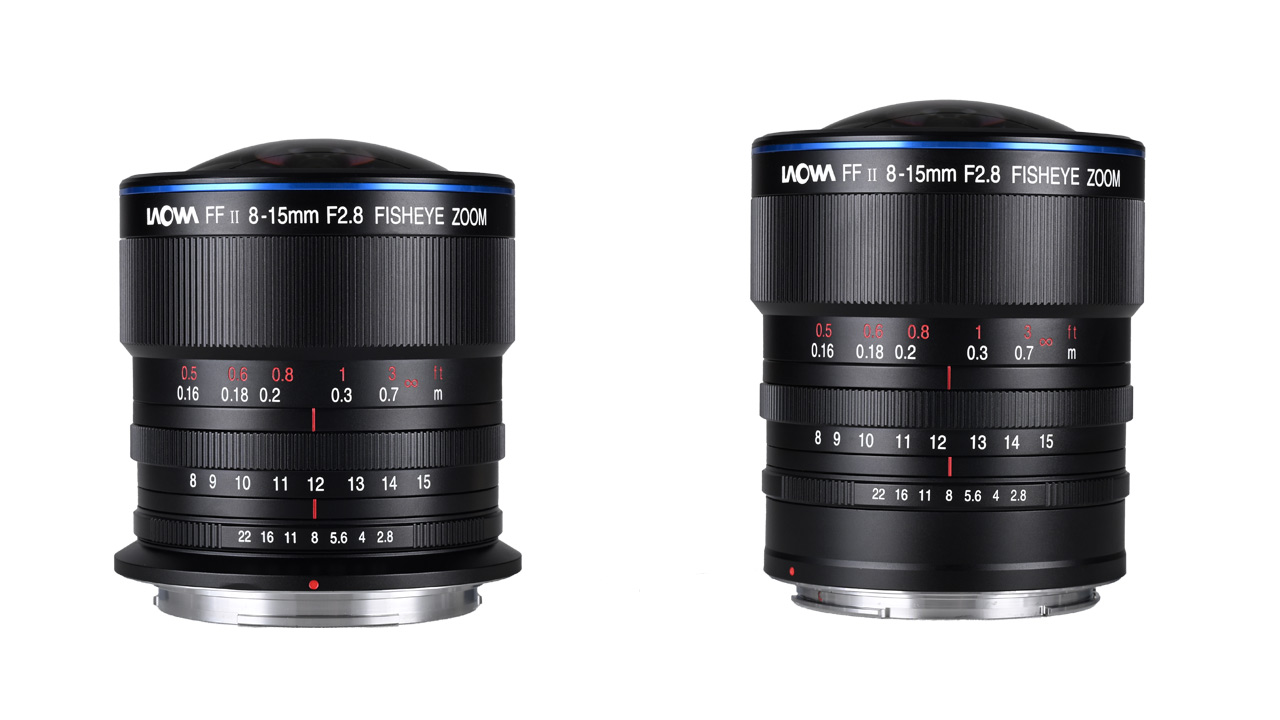When the Fujifilm GFX100 II was released last year, much hype and anticipation was put into this medium-format camera. Fujifilm themselves hyped the camera up as a highly capable cinematography camera. To put this camera to the test, Tokyo-based Albanian filmmaker and photographer, Erjol Muarem, used two GFX100 II cameras to produce a documentary video focusing on Bonsai, “Living Art.” There was a lot that went into making this documentary, especially with the artists behind the camera. Volume 02 will show how to put these cameras to the test with the highly-touted Premista series of zoom lenses. Director Erjol Muarem and Director of Photography (DOP) John Donica used the GFX100 II in filming “Living Art.” We interviewed Erjol and John at our PRONEWS offices to get his take about the capabilities of shooting with the Fujifilm GFX100 II series of cameras.
About ERJOL MUAREM

Erjol Muarem is a Japan-based Albanian filmmaker, photographer, and director. Surprisingly enough, this is not a career path Erjol set out with before moving to Japan. He worked normal jobs here in japan for a while, but when the COVID pandemic started, he made some changes to his life. He spent many hours a day practicing photography and videography, sometimes taking multiple shots of the same subject until he perfected the shot in his eyes. That perfectionism carried over to videography and directing.
Bonsai as a living art form – Erjol’s approach to the documentary
Erjol mentioned this was not even planned at first. He approached Fujifilm about using the GFX100 II and Premista lens for a project…and contemporary dancer Maaya Egami approached Erjol wanting to shoot a video about contemporary dance with Bonsai. After meeting Daisuke, they originally thought a simple SNS video. “After hearing about Daisuke’s life and about Bonsai, I suggested to him, ‘lets do a documentary,'” Erjol mentioned, regarding how this came to become a full documentary. Erjol added that his imagination is always working as he talks with someone. Hearing Daisuke’s story drove Erjol into making something truly special.

Production approach to filming bonsai:
Erjol did not have a straightforward approach regarding imaging bonsai. From the beginning of planning through the shoot, he and his colleagues brainstormed many ideas for angles and shots. The initial aim was a 10 minute runtime, but creating something that long requires not just budget or resources, but time as well, so the run time was narrowed to 7 minutes.
For narrative and organization, Erjol had a good idea of how the flow would go from the start. The narrative dramatic turning point was the connection within Daisuke’s family. Those shots had more depth and dramatic angles within the shots. For the forest scenes, Maaya additionally gave much more advice into the visual aspect, as bonsai are not moving. Her dancing provided the movement for the forest scenes.
Dollies were used to ensure there was a consistent flow. The only static shot was the wide shot of Daisuke and the garden; every other shot, even the interview scene, had movement in the camera. That also includes the shots with Maaya.
About John Donica, DOP

Before starting his career as a DOP, John had experience with medium format 120-film photography. He then moved into becoming a director of photography and videographer.
For him, Lighting the scenes for the bonsai was highly important in documentaries for John. The subject being properly lit as well as positioned in the right location is all important, and he would approach the documentary the same way he would approach the production of a fiction feature film. “The experience doing photography 12 years ago helped me a lot to frame the subject and play around with composition and lighting,” John said regarding his approach to producing the documentary. There is an inherent limit of creativity with documentaries. The focus should be on the story, and it’s not a good idea to overdo and over-promote; keep the whole story low-profile. That’s the approach John and Erjol used together to produce “Living Art.”
Collaborating with John Donica

Erjol consulted with John Donica, a colleague with much more experience in the industry. They worked ideas off each other not just with the camera or lighting but the framing of each shot. Erjol chose John because John could focus on the more creative aspects of the shoot while Erjol could get the vision of the shoot together. It was pretty much second nature for the two of them to collab.

Influences in creating the documentary
To prepare for preproduction, Erjol watched a number of documentaries from various YouTube channels that focused on emotional art within narrative. These documentaries had much more engaging music and much more layers, unlike other documentaries on Bonsai that he watched, which were more straightforward and “Japanized,” not really for global audiences. Erjol and John set out to ensure there was full emotion conveyed in the film.
Camera Setups and Gear Used

There was a few camera setups for the documentary. For all 3 setups, the Fujifilm GFX100 II was combined with PREMISTA cinematic lenses. Specifically, the PREMISTA 19-45mm and 28-100mm T2.9 lenses were used.
The lighting setup was 3 ARRI Daylight 1.2K and other small accent lights for the bonsai leafs, including a 300C. The crew also used Lightbridge mirrors to control the light direction. Wide shots were used for the garden scenes, and a couple of different setups were used for the interview scene.
Erjol mention that even with the wide shots, there is a sense of depth with the GFX100 II. With the wide shot for the interview, the PREMISTA 19-45mm was used for that shot, at 19mm, with its widest aperture. The tighter shot was with the 28-100mm at 90mm. The Bokeh and quality of the lens, despite the fact it is a normal lens, there was a ‘nice, naturalness’ that reflected through the lens. There was no need for a special lens at all to ensure beautiful capturing of the bonsai. We didn’t need a special or vintage lens to show the naturalness of the bonsai. The PREMISTA lenses don’t over-sharpen, Instead, they produces a very beautiful natural image. Maaya and Daisuke both said the resulting shots look like real-life.
Watch the behind-the-scenes from the production here:
Why the GFX100 II?

It was Erjol who proposed to John they create something with the GFX100 II. John mentioned he was excited for the opportunity, because he hadn’t used the larger format in the past, for video that is. Knowing Fujifilm’s lovely green color rendering, filming the bonsai was an excellent match and good opportunity to use the GFX.
The Medium Format Shot
The flexibility of the medium format sensor, and the 100mp sensor allows for very clean lowlight shots. That’s the benefit of having a medium format sensor in a small form factor body. Shooting in varied light ended up being another huge benefit of the larger GFX100 II sensor. In the forest scene, it was most difficult to control light, relying mostly on natural light. The large format sensor and Fujifilm color science helped bring out the greens and beauty of nature. John, Erjol, Daisuke, and Maaya all expressed their impression with Fujifilm’s vaunted abilities to bring out the greens and colors of nature.
Sound Design and music – Collaborating with the music composer Tetare
Erjol’s admitted weakest point is choosing score. Originally, there was thought of not using a music composer, but after hearing feedback from his editor, he worked together with Tetare via Alisa and Koshi Uehara, the production company for the documentary. After a zoom meeting where he expressed waht what his desire was for the track, “Tetare understood the assignment IMMEDIATELY,” Erjol mentioned. The first draft of the score was pretty much the last draft and final version with little fixes needed. Erjol thought that itself was very special in the process of production.
How the GFX100 II brought the message of bonsai to life
Erjol’s creative mind operates on what he referred to as 95 and 5 – the 5 being the external presentation and cinema technicality, but the 95 is the internal motivation and inspiration. By combining the visuals, storytelling, and music, Erjol mentioned he strives to get people to love art more and support art more. He wants people to become inspired through his work: He wants that more than getting praise for himself.
As for the GFX100 II, He referred to a director who used an Arri Alexa 65 with a massive sensor, who said ‘if you want to show greatness, but you need to have something that allows you to show it.’
The GFX100II has the capability of capturing that desired “wow!” effect of the bonsai.
Memories of a lifetime shooting with the Fujifilm GFX100 II
At the Preview event in Aoyama, Erjol found himself replaying every single moment of each shot in his head. He remembered every single moment from the 3 days of the shoot, reliving through each scene. These, he says, are the ‘beautiful’ moments’ of creativity.
Erjol knew who he wanted to work with on this project, and he contacted them all directly. “The amount of dedication from everyone – no complaints or anything – from the 3 days of shooting. Everyone had dedication and love toward making the film,” despite some logistical – and nature – difficulties.
This documentary was originally just an SNS idea, and there was not much pre-production for the film. However, during the different days of shooting, more and more was added to the shots. The stars of the show, Maaya and Daisuke, contributed significantly to the production side as well, with their input.
The production occurred during a time of family tragedy Erjol, with his father passing away during production. Erjol credits his wife provided him with incredible support during that time, and the crew was also understanding and supportive through it all. He thought to himself first and foremost, thanks to all the support he had, he wanted to continue and finish this project to its end.
Most challenging aspect of filming for John
For John, the camera was completely unfamiliar for him, and that created its own challenges for John, but its challenges he wanted to meet by doing this documentary. The camera body is designed primarily for photography, and it does not have the quick-access buttons readily available for normal cinematic cameras, but that’s just something to adapt to in the shooting process. For John and Erjol, some settings needed were buried and had to be found, but that was something overcome quickly.
The camera did not have any overheating issues, which was surprising due to its form factor. Cable management for a photography camera sized form factor was a challenge. Luckily for both John and Erjol, the vital HDMI port was a normal sized port, minimizing data loss and cable necessities. This was John’s first time using a GFX camera so that itself was a challenge to overcome. John expressed his gratitude for the opportunity to meet the challenges and how impressed he was with the abilities of the Fujifilm GFX100 II.












